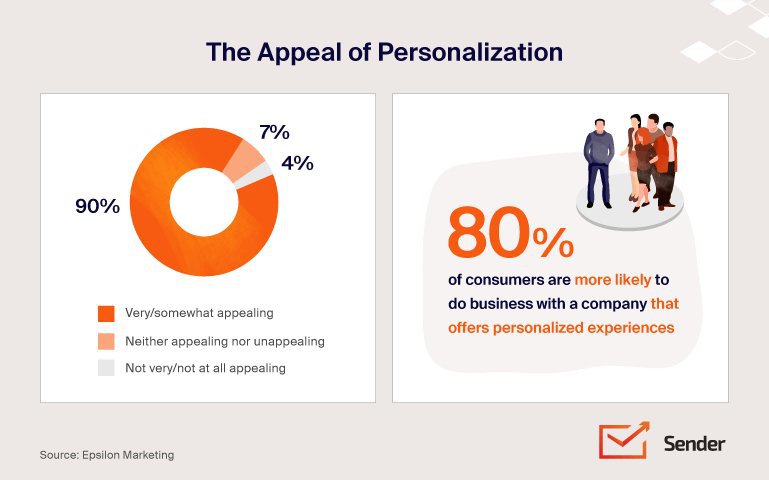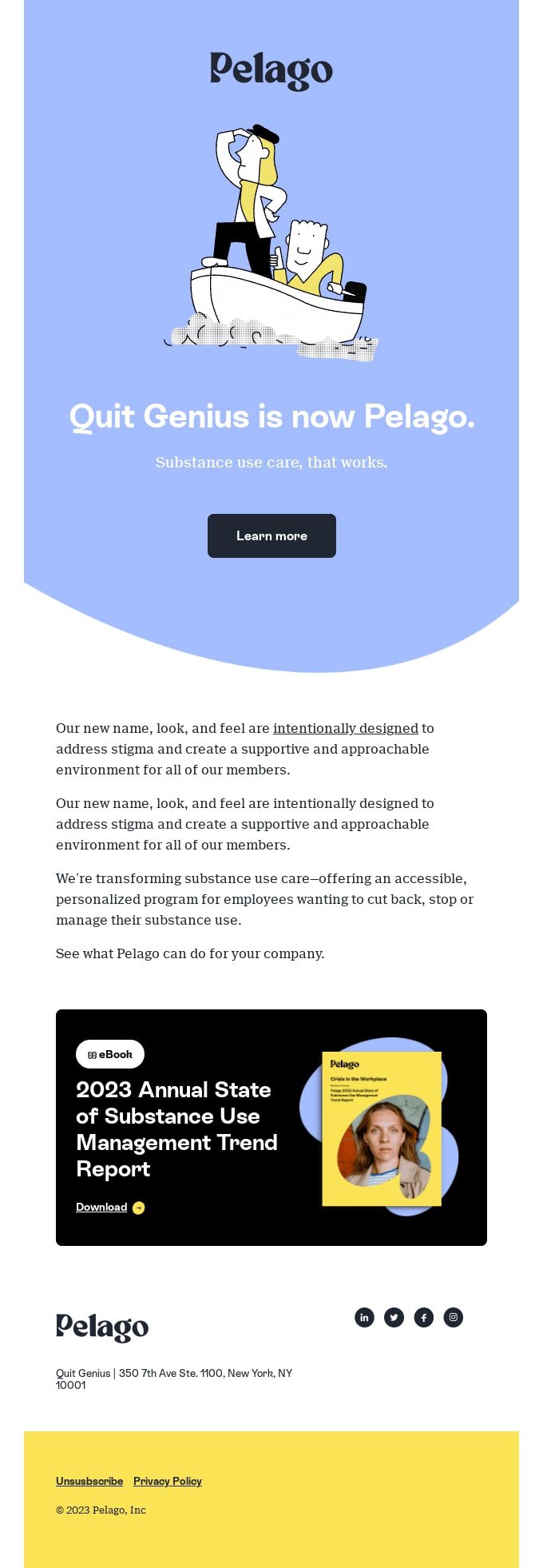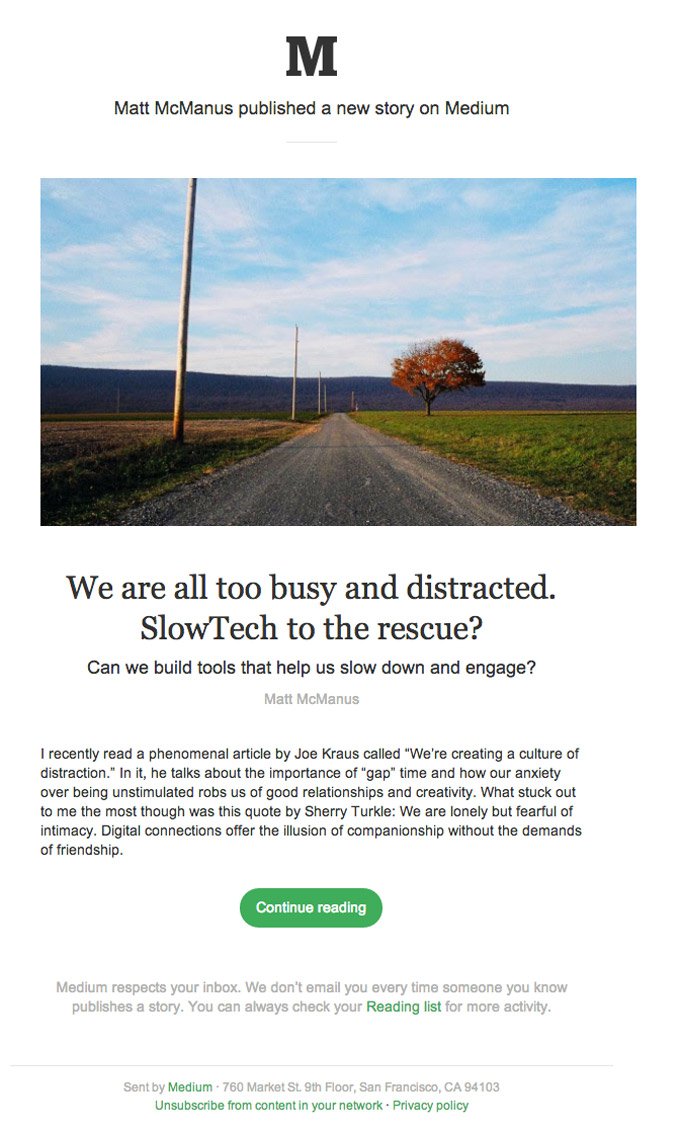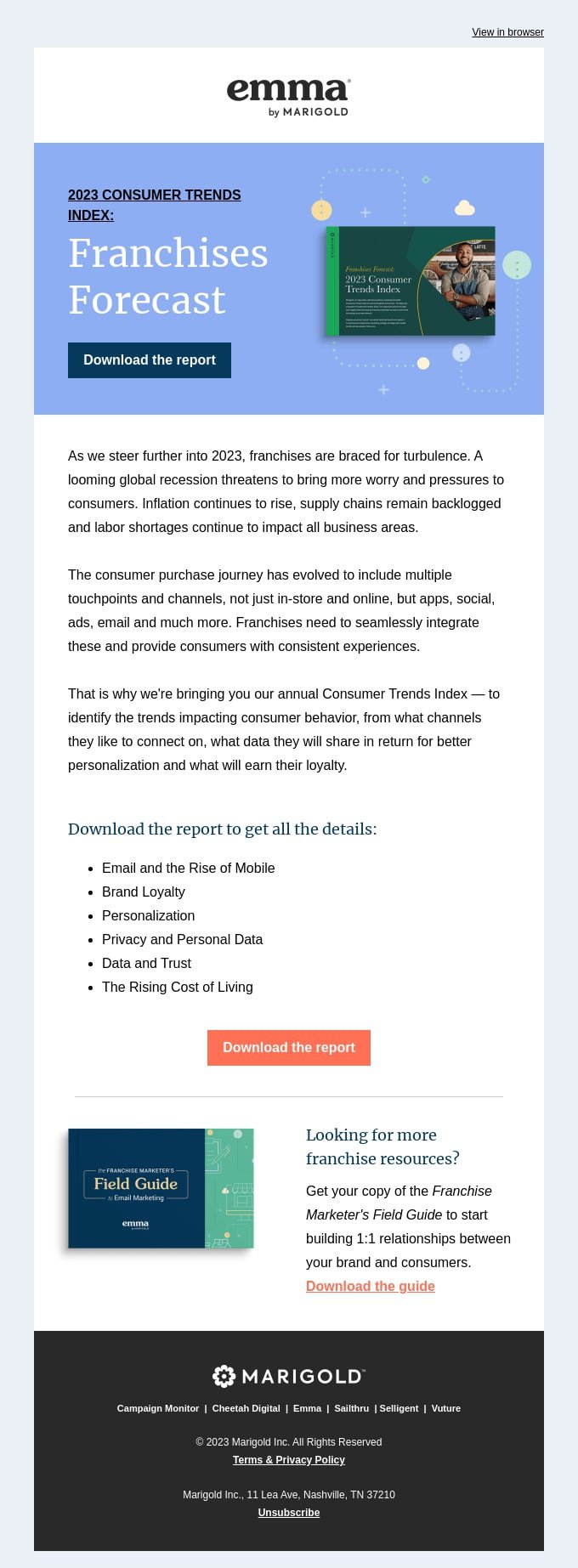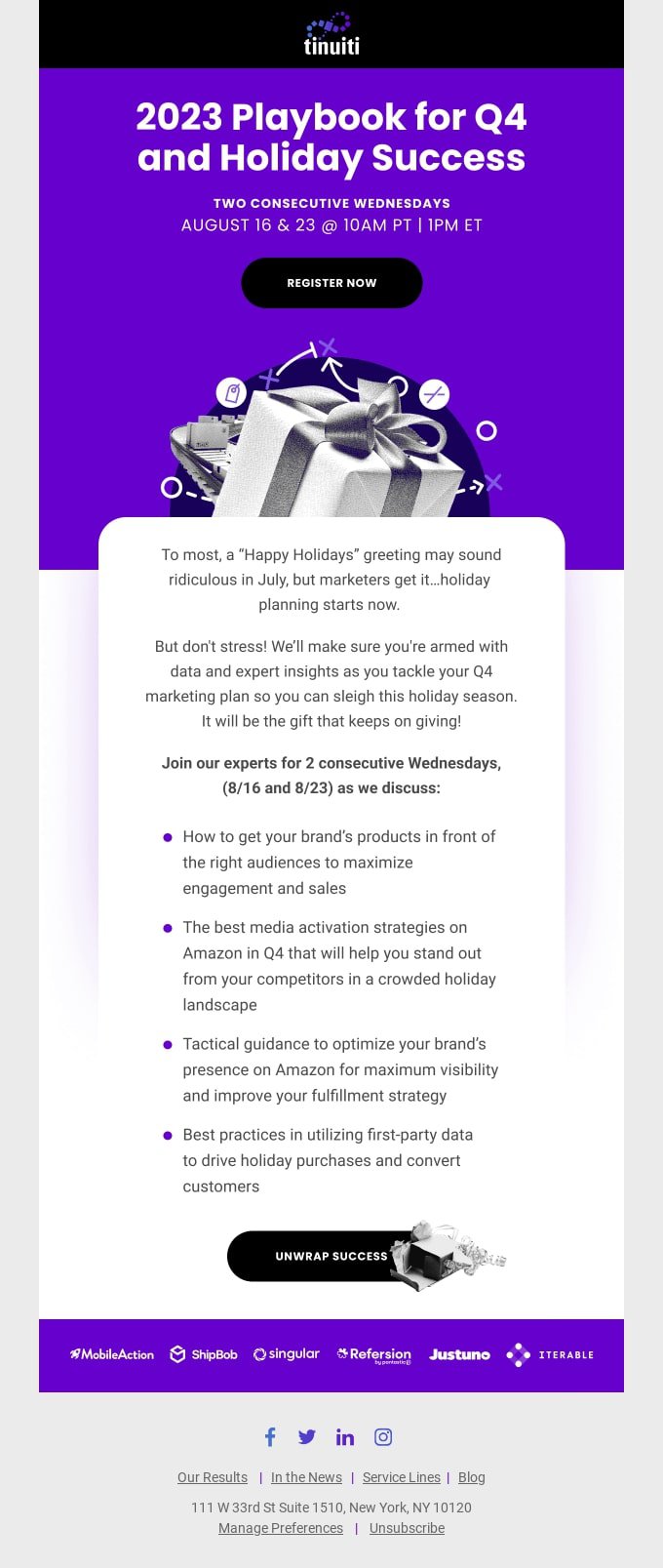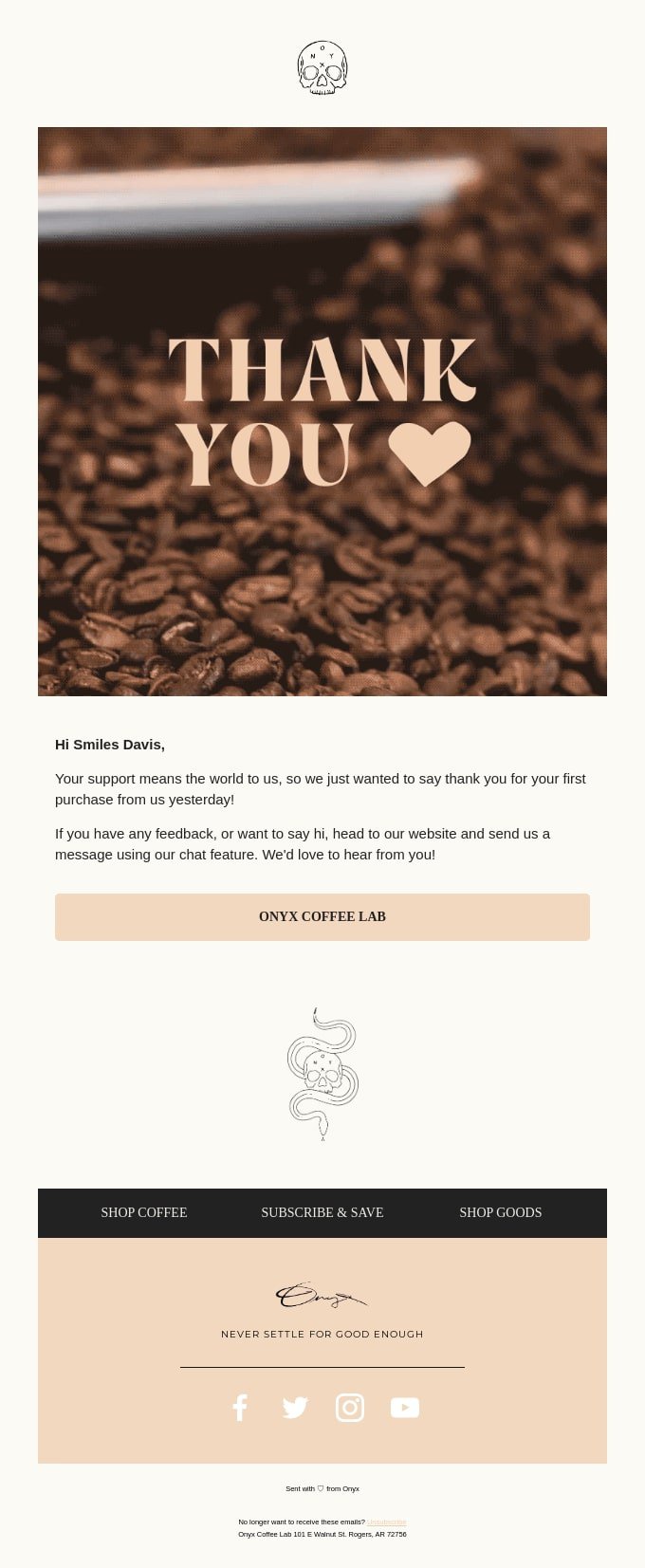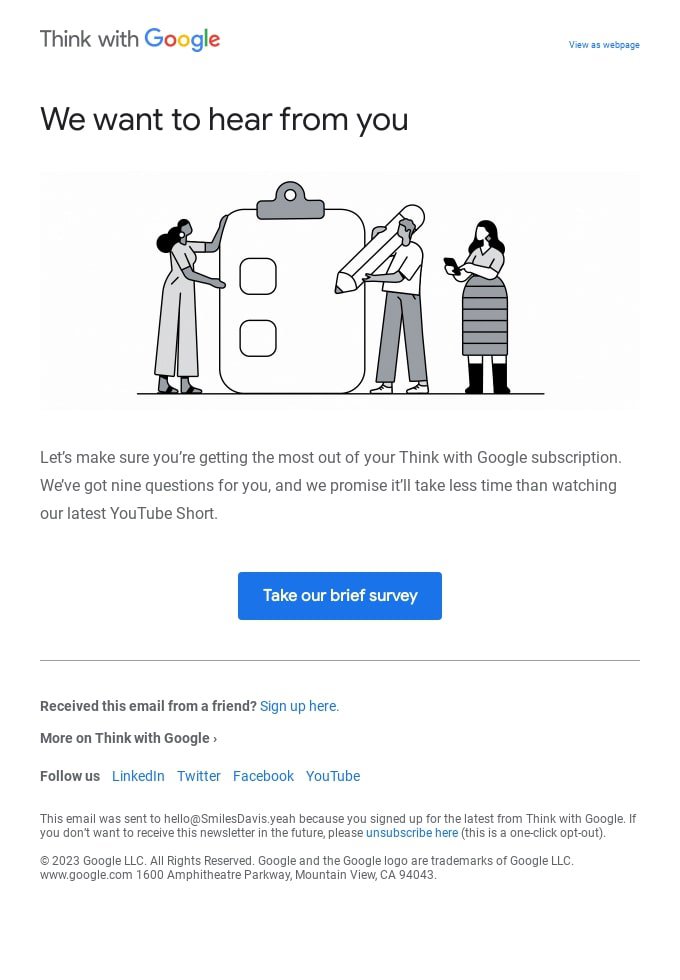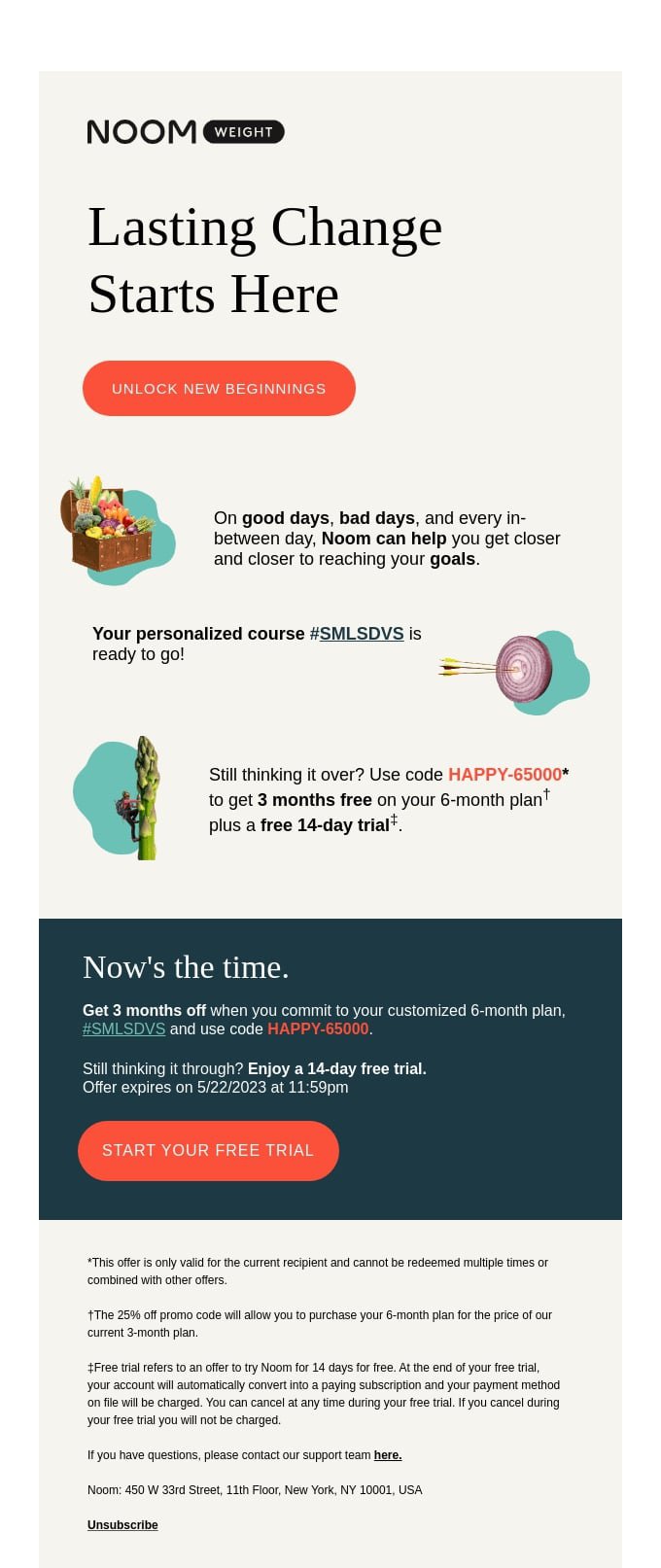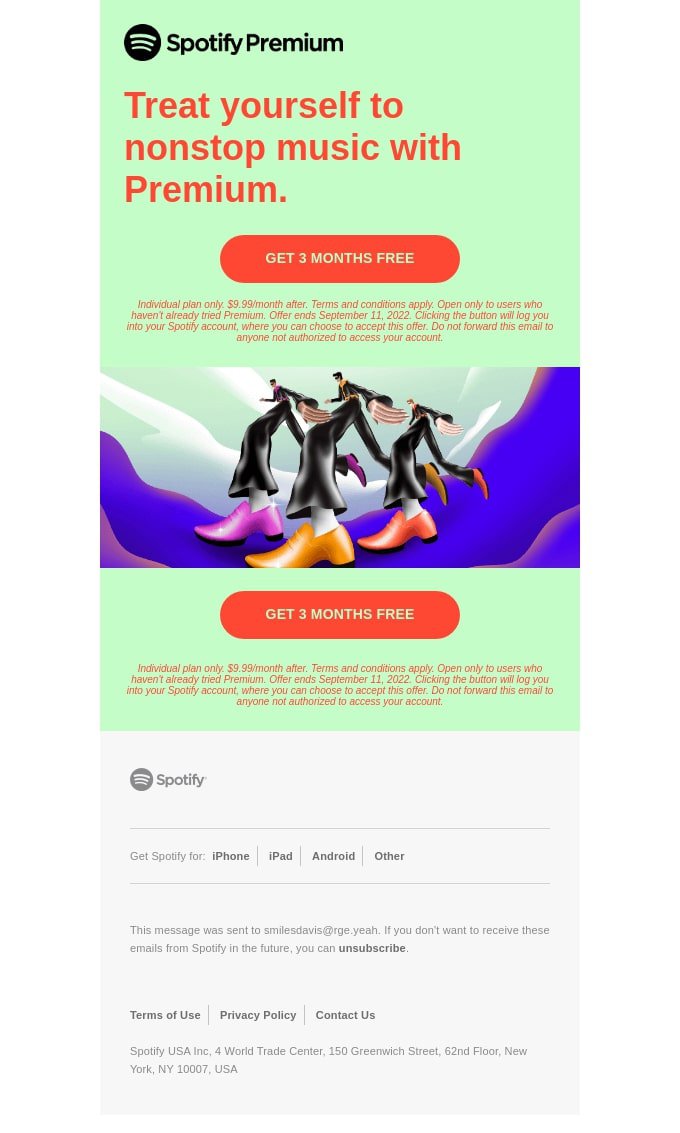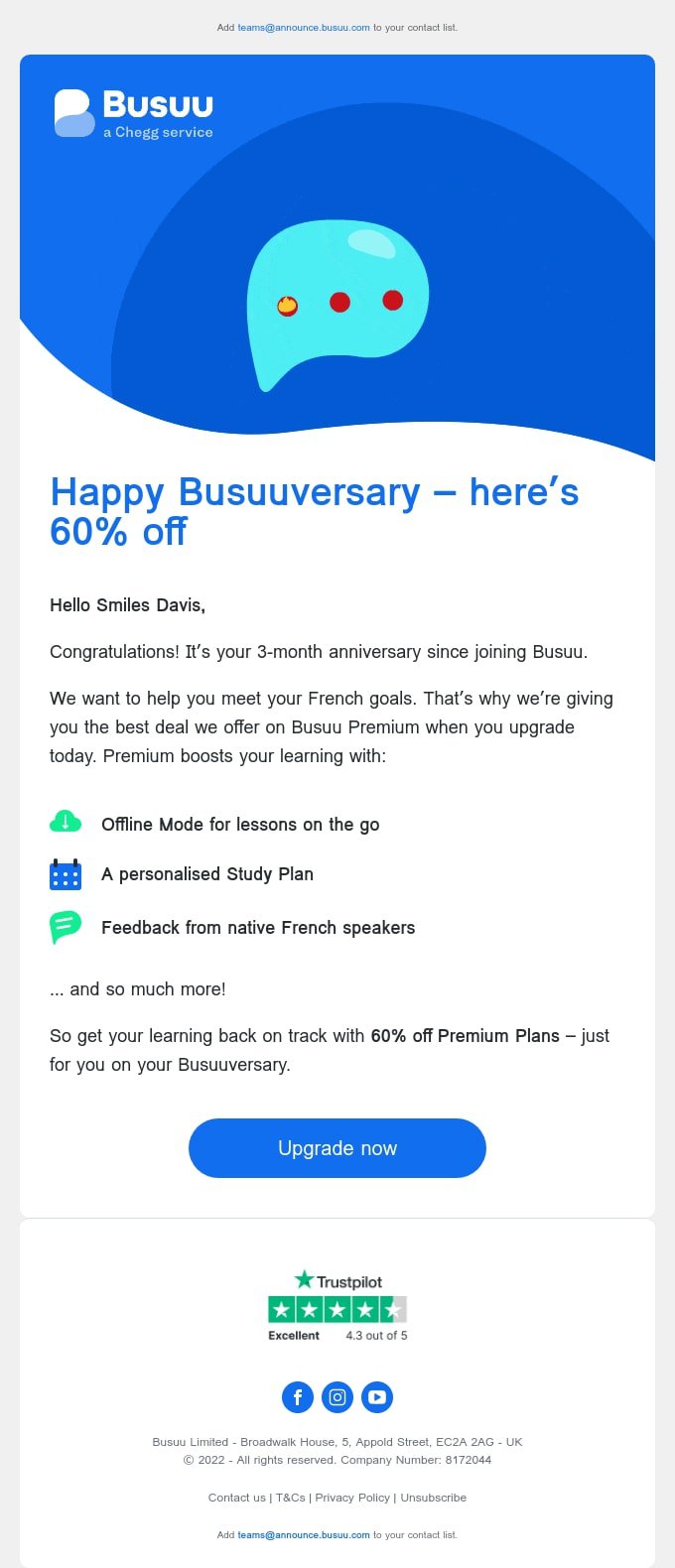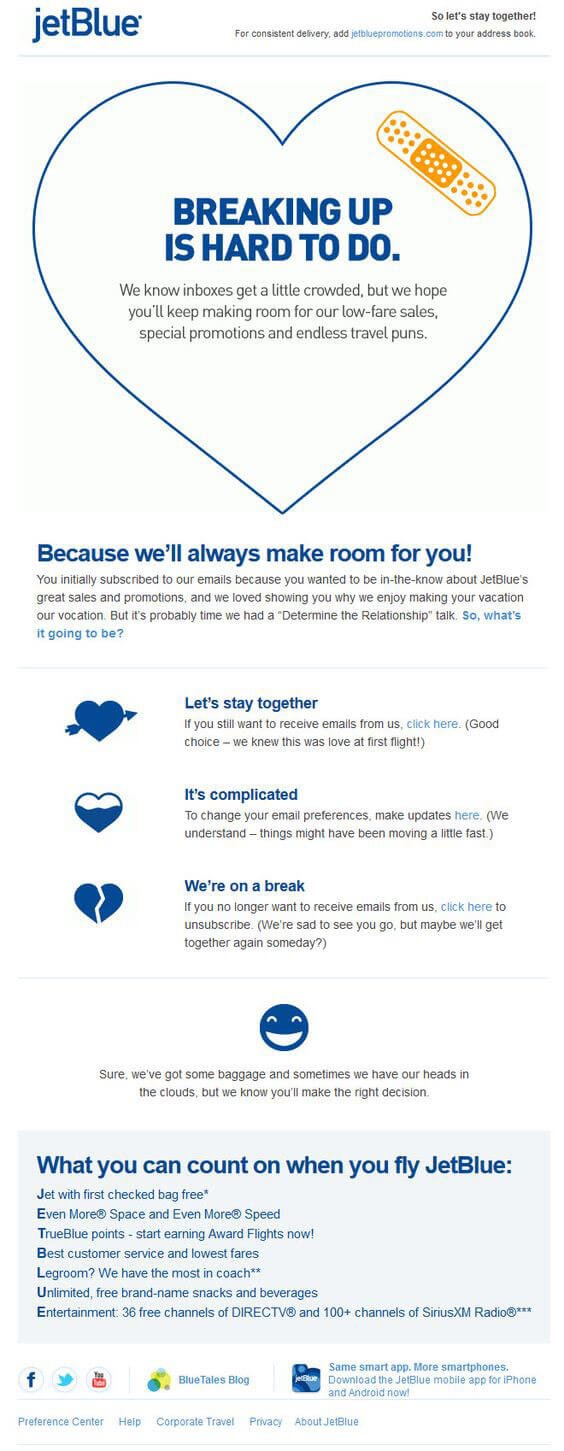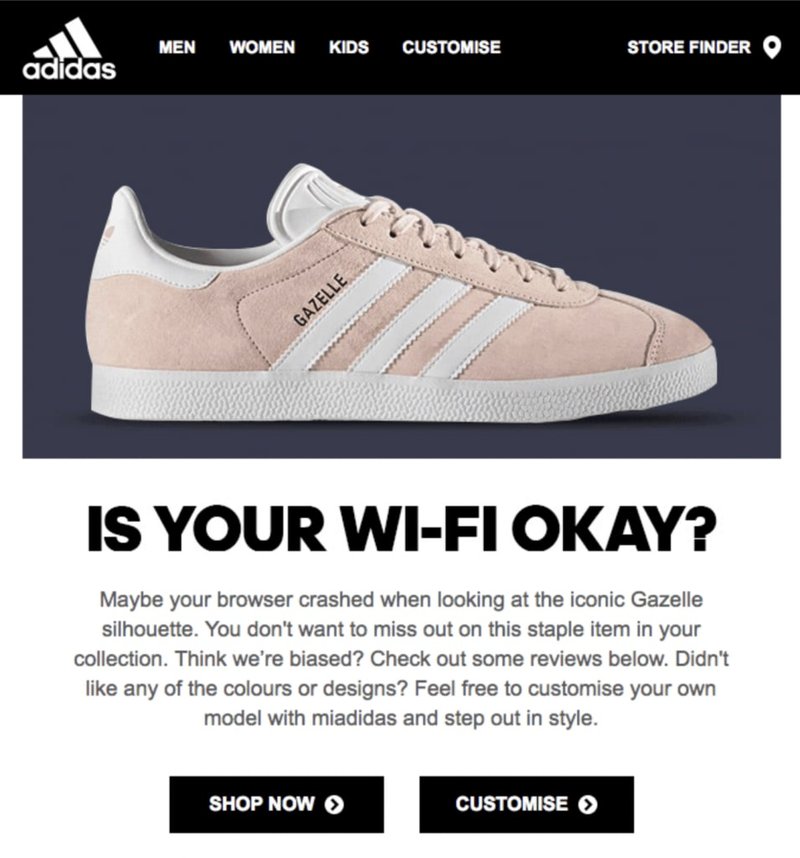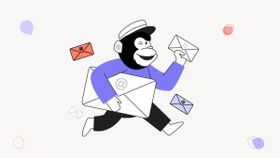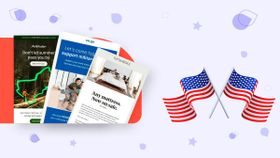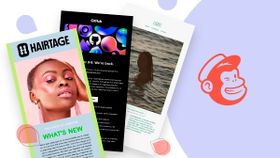22 Best Email Marketing Examples of 2026 (Don't Miss These!)
While there always seem to be new marketing channels to try out, email is here to stay. Check out these email marketing examples and tips for maximum ROI.
Updated November 5, 2024

Video may have pushed the radio star into a corner – but social, SEO and all the other new channels just can't take the place of email marketing.
In fact, email marketing is thriving. For every $1 you spend on email, you get an ROI of $40. And that's just the tip of the iceberg. Email is one of the few marketing channels that don't depend on algorithms, infinite budgets, and hidden search secrets. It's not rented land, it's your land, and, with the right email software, you can build as many houses on it as audience segments you have.
Content may be king, but email's the royal route, and you should definitely invest in it.
If you're looking for inspiration for your next email campaign, you're in the right place. We've gathered 22 email marketing examples across different types of campaigns. Read on for ideas, tips, and best practices on how to nail your company's emails.
What is an email marketing campaign?
An email marketing campaign is a series of marketing messages sent via email to an entire email list at once. Usually, the main goal of an email campaign is to nurture leads with educational content or entice recipients to buy a product or service from you.
By sending targeted and relevant messages, businesses can achieve their goals, while building a strong rapport with their subscribers. The main advantage of using email as a marketing channel is that you don't have to depend on an algorithm to get your message across as you would in the case of optimizing content for search engines or posting on social media, for example.
Types of effective email marketing campaigns
Email marketing campaigns come in various forms, each tailored to achieve specific objectives. While you may not always want to incorporate all of them in your email marketing strategy, you should at least be aware of the main types of marketing emails, and know when to use each.
Here are some of the most effective types of email campaigns, along with their main goals:
Traffic generation
Traffic generation campaigns aim to direct recipients to your website, blog, or landing pages. They typically offer valuable content snippets that entice recipients to click through and learn more.
Email newsletters are a prime example of traffic generation campaigns. They are usually sent on a regular schedule (weekly, fortnightly, or monthly), and their main goal is to share new blog articles, pages, or products with prospective and current customers.
Awareness email
Awareness emails educate and engage recipients about your industry, products, or services. They position your brand as an authority and resource in a way that doesn't attempt to sell as promotional emails do. Instead, they inform email subscribers of the genuine issues your product or service is addressing.
Awareness emails are usually sent when someone has shared their email address with you to receive a downloadable piece of content, access to a webinar, or simply out of interest in your content.
Lead nurturing campaigns
Lead nurturing campaigns aim to guide potential customers through their decision-making journey. They involve sending relevant content that addresses their needs and objections. Unlike awareness emails, lead nurturing campaigns are usually sent in a drip email series: one by one, at well-calculated intervals, slowly moving the subscriber from "problem-aware" to "solution-aware," incentivizing them to buy your product.
Confused about the terms? Here's the difference between a drip and a nurturing campaign.
Revenue generation
Revenue generation campaigns are designed to prompt direct conversions, such as purchases or sign-ups for premium services. This type of email usually comes with an offer as part of a special event campaign.
Examples of this include:
- An April Fools email
- A Mother's Day email
- A St. Patrick’s Day email
- March Madness campaign
- Father's Day email
- Or a win-back email for customers who are out of the loop.
How to build successful email marketing campaigns
Creating impactful email campaigns requires a strategic approach. Here's how you can build successful campaigns:
Set clear goals
You can't know if you're doing well if you have no goal to measure your efforts against. So, before you start crafting your emails, determine the purpose of your campaign. Are you trying to inform, engage, or sell? Clearly defined goals will also shape your content and design.
Use personalization
Email personalization is key for every type of email. To be successful with your campaign, address recipients by name and segment your list based on demographics, behavior, or preferences. Personalized emails have a higher chance of resonating.
Invest in quality images
Human brains process image content 60,000 times faster than text, so be sure to include attractive graphics in your email. Visual content enhances the appeal of your emails and can make your email content stand out.
Optimize for mobile devices
Smartphones and tablets are an essential part of our lives – and are often used to view emails, too. Remember to optimize your emails for mobile devices and different email clients to ensure you don't alienate a significant portion of your email recipients.
Add an enticing CTA
Compelling Call to Action buttons and copy encourage recipients to take action. Use action-oriented language that resonates with your target audience. Here are some of the words you could include in your CTA:
Use the right email marketing tool
Your email marketing software can make or break your campaign, so make sure to choose one that allows you to easily automate your emails and measure your efforts. Some of the features to look for include:
- Advanced segmentation
- Email templates and easy design customization
- Advanced email workflows, or sequences
- Advanced email analytics
- The option to connect your email to your website or store to send emails based on your customers' store behavior
- The option to connect your email, store, and delivery service to send transactional emails regarding orders.
Email campaign examples and how to make them stand out
Let's delve into various B2B email marketing campaign examples and discover how to make each type stand out:
Welcome email
The welcome email is the first communication subscribers receive after signing up. Its goal is to make a positive impression, set expectations, and provide value. Some welcome emails also provide links on how to get started with using a product (e.g., software). Generally, though, the onboarding email series is considered to be a different part of the email strategy and it will provide more information on how to navigate the website or product.
How to make it stand out:
- Use a friendly and welcoming tone that aligns with your brand voice.
- Offer a special welcome discount or gift as a token of appreciation.
- Include clear instructions on how to navigate your website or access resources.
Curated content
Curated content emails compile a selection of your best blog posts, articles, or resources that align with your subscribers' interests. These types of email marketing aim to inform the subscriber and they can be sent as monthly, fortnightly, or weekly newsletters.
How to make it stand out:
- Personalize content recommendations based on previous interactions.
- Write engaging descriptions for each piece of content to spark interest.
- Use visually appealing graphics and organize content for easy navigation.
Company announcements
Company announcement emails share exciting news about your brand, such as product updates, new partnerships, achievements, or upcoming events. The key to sending out successful company announcement emails is to underline what your audience is getting out of the news or how their support has helped you get there.
How to make it stand out:
- Craft a captivating email subject line that generates curiosity. Make it more about the customer, less about you.
- Use storytelling techniques to make the announcement relatable and memorable. Appeal to emotions to make the audience part of your story.
- Include multimedia elements, such as high-quality images or videos, to enhance the announcement's impact. For instance, a "thank you" video from the CEO could have a tremendous impact, particularly on a B2B audience – but not only.
Want to make sure your email subject lines stand out even in the most crowded inboxes? Contact Mayple! We’ll help you hire an email copywriter vetted by our team and matched for your industry.
New article on the blog
New article emails promote recently published blog posts or articles, offering recipients valuable insights on a specific topic. Case studies, reports, and other types of content can be used in this type of newsletter too.
How to make it stand out:
- Write an attention-grabbing teaser that highlights the article's main points.
- Incorporate compelling, high-quality infographics that illustrate key concepts.
- Include social sharing buttons that encourage recipients to share the content with their networks.
Video email
Video emails incorporate multimedia content, such as product demonstrations, tutorials, or brand stories, to engage and educate recipients. Sometimes, video emails are sent with specific event recordings such as webinars or conferences.
How to make it stand out:
- Use an eye-catching thumbnail image that represents the video's content.
- Craft a concise and compelling video title or description.
- Place a prominent play button on the thumbnail to encourage recipients to watch the video.
Product promotion email
Product promotion emails showcase your products or services and persuade recipients to make a purchase. These promotional emails can be used by a variety of businesses, from eCommerce (e.g. promoting a new line of products or a new collection) to SaaS (e.g., promoting specific features for your software.)
How to make it stand out:
- Highlight the benefits and features of the product.
- Create a sense of urgency with limited-time offers or exclusive discounts.
- Use persuasive language and compelling visuals that resonate with your target audience.
Gated content email
Gated content emails promote valuable resources, such as eBooks, white papers, or webinars, that require recipients to provide their contact information in order to access.
How to make it stand out:
- Clearly state the value of the gated content and how it addresses a specific pain point.
- Craft a persuasive CTA that highlights the benefits of accessing the content.
- Use engaging visuals and graphics that provide a preview of the content.
Webinar email
Webinar emails promote upcoming online events or workshops and encourage recipients to register and participate. If someone has already signed up for a webinar, you might also want to send them a reminder with the time and the access link.
How to make it stand out:
- Highlight the key takeaways and benefits of attending the webinar.
- Use attention-grabbing visuals and include speaker bios to build credibility.
- Incorporate a countdown timer to create a sense of urgency.
Case study email
Case study emails share success stories of clients or customers who achieved remarkable results using your product or service. B2B companies are more likely to use these, particularly for mailing list members who are already aware of the product, its benefits, and how it can help them solve a problem.
How to make it stand out:
- Present the case study in a storytelling format that highlights the challenge, solution, and outcomes.
- Use data and metrics to quantify the results and demonstrate the impact.
- Include quotes or testimonials from the clients to add authenticity.
Request demo
Request demo emails offer recipients the opportunity to see your product or service in action through a personalized demonstration. These emails are usually sent to people who are in the Consideration stage of the marketing funnel when they're looking for reasons to buy or not buy your products.
How to make it stand out:
- Highlight the main features and benefits of your product or service.
- Use visuals, such as screenshots or videos, to provide a sneak peek of the demo.
- Include a clear and prominent CTA for scheduling the demo session.
Onboarding email
Onboarding emails guide new customers through the initial steps of using your product or service. They also serve as a way for companies to keep users engaged after sign-up, so they don't drop out of the funnel and lose interest.
How to make it stand out:
- Provide clear step-by-step instructions to help users get started.
- Offer tutorial videos, tooltips, or guides for a seamless onboarding experience.
- Include links to support resources or a dedicated onboarding webpage.
Thank you email
Thank you emails express gratitude to your customers for their support and may include special offers or incentives. Both B2B and B2C companies can send them, and they can sometimes be associated with company news.
How to make it stand out:
- Personalize the thank-you message based on the recipient's actions or purchase history.
- Include a special discount or offer as a token of appreciation.
- Use visuals that evoke positive emotions and align with your brand identity.
Survey email
Survey emails gather feedback from recipients to improve your products, services, or customer experience. You can send them regularly after the launch of a new product, feature, or service, or after interactions with your customer care team.
How to make it stand out:
- Clearly explain the purpose of the survey and how recipients' input will make a difference.
- Keep the survey short and focused on specific questions or topics.
- Offer an incentive, such as a chance to win a prize or access to exclusive content, for completing the survey.
Free trial email
Free trial emails encourage recipients to try out your product or service for a limited time, showcasing its value and features. For instance, if you own a fitness app company, you could send a free trial offer to free or inactive subscribers, or even to those who have recently canceled their subscription.
How to make it stand out:
- Highlight the main benefits and features of the product or service.
- Clearly state the duration of the free trial and any conditions.
- Use persuasive language that emphasizes the value recipients will gain from the trial.
Mother's Day email
Mother's Day emails are sent in the weeks leading up to Mother's Day and they are used to express gratitude for the mothers in your customers' lives. These campaigns often offer promotions on products typically bought as Mother's Day gifts.
How to make it stand out:
- Be inclusive and genuine in your message.
- Include high-quality images that evoke positive emotions (e.g., family photos).
- Offer discounts or other incentives for Mother's Day gifts.
Referral email
Referral emails incentivize subscribers to refer friends or colleagues to your brand, expanding your reach. Since "word of mouth" is one of the best forms of social proof, this type of email can attract new customers likely to stay loyal to your company.
How to make it stand out:
- Clearly outline the referral process and the benefits recipients will receive.
- Use attention-grabbing, high-quality images, such as visuals of the rewards or incentives.
- Include social sharing buttons to make it easy for recipients to refer others.
Upsell email
Upsell emails usually aim to convince customers to purchase an upgrade or add-on in addition to their existing product or service. These emails are sent at the decision stage of the funnel and should be carefully crafted to ensure they don't appear too pushy.
How to make it stand out:
- Personalize the upsell recommendation based on the customer's purchase history.
- Highlight how the upsell enhances the customer's current experience.
- Offer a special discount or bundle deal to sweeten the offer.
Milestone celebration
Milestone celebration emails mark significant achievements, such as your company's anniversary or reaching a certain number of subscribers.
How to make it stand out:
- Reflect on the journey, achievements, and challenges that led to the milestone.
- Express gratitude to your customers or subscribers for their support.
- Include interactive elements, such as GIFs or videos, to make the email engaging.
Unsubscribe email
These emails happen when a user clicks on that unsubscribe button. It's a way to acknowledge their decision to stop getting your emails and a chance for you to offer alternative options. You may also want to include a quick feedback survey in your unsubscribe emails, to collect data on why customers are unsubscribing.
How to make it stand out:
- Express understanding and respect for the recipient's decision.
- Offer the option to adjust email preferences, such as reducing email frequency.
- Provide a memorable and positive farewell message that leaves the door open for future engagement.
Email preferences update
Preferences update emails allow subscribers to customize the type and frequency of emails they receive from your brand. While this is usually seen as a purely technical type of email, it's important to get it right, as it can influence customer experience. It could have potential legal implications, too.
How to make it stand out:
- Clearly explain the customization options available and how they can benefit the recipient.
- Use visuals or icons to make the email preferences easy to understand and adjust.
- Include a clear CTA that directs recipients to their preference settings.
Winback sequence, aka the “re-engagement” email
Winback email sequences are designed to bring inactive customers back to your product or service if they haven't used it in a long time. They typically include a series of emails that remind customers of the value they're missing out on and offer incentives for returning.
How to make it stand out:
- Include social proof, such as customer testimonials, in the email sequence.
- Highlight any new features or products since the customer last interacted with you.
- Offer an incentive that directly appeals to the customer's needs, wants, interests, or pain points.
Browser abandonment
Browser abandonment emails help bring customers back to their abandoned shopping carts. These emails are triggered when a customer starts a purchase but leaves without completing it.
How to make it stand out:
- Include a strong sense of urgency in the subject line and email copy.
- Personalize the email with relevant product recommendations based on the items the customer viewed or added to their cart.
- Add an incentive to the mix: an offer, discount, or freebie your customer can grab and use to come back, add the product to the cart, and/or finish the transaction.
- Check out our guide to the best browse abandonment subject lines for inspiration.
Email marketing: an essential element of any digital marketing strategy
By the end of 2023, email marketing revenue will reach approximately $11 billion. And for all the good reasons: high-performing campaigns can drive customer engagement and loyalty, increase revenue, and help businesses stay top of mind in a cost-effective way.
What's more, unlike social media platforms, ads, and organic optimization, email marketing allows you to create effective campaigns on your own terms. No moody algorithms, no budget spikes, no hidden fees. Just you, an inbox, and your email list's attention.
Ready to get your email marketing strategy on track?
Contact us and let's match you with the best email marketing agency in your niche!


